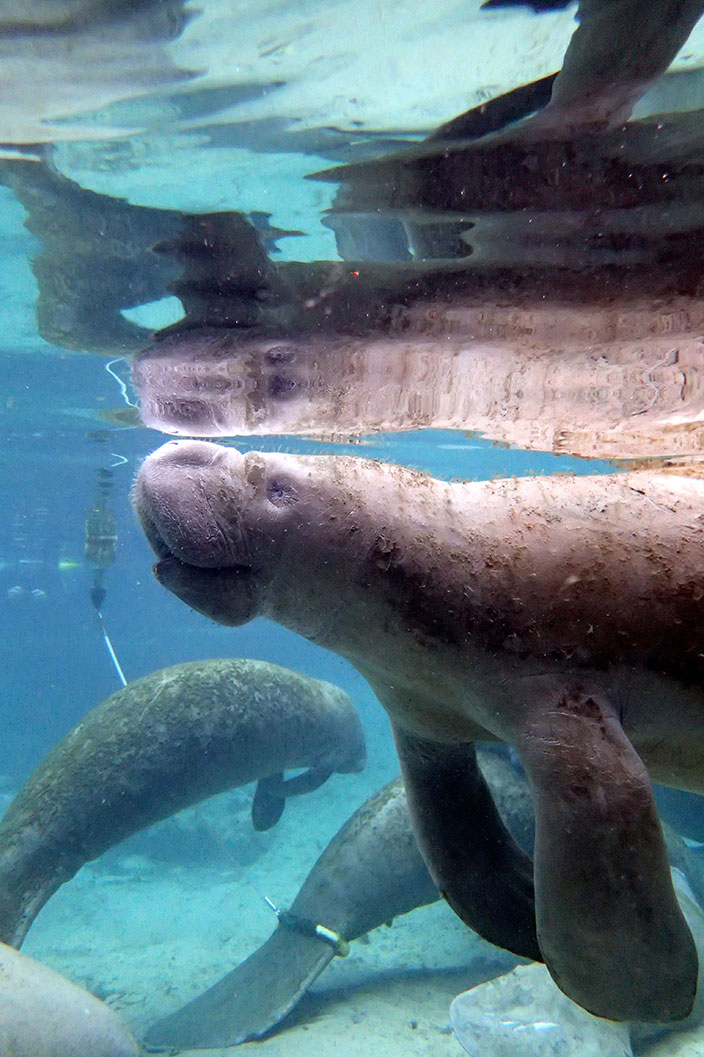What a year 2017 was for manatee lovers! We wanted to do a quick summary of some highlights we thought our visitors would appreciate!
One of the coldest years in our memory, 2017-18 brought us the challenges of the chilly temps and record numbers of our gentle giants! Due to the high population of manatees needing the warmth of the springs, Three Sister Springs was closed to swimmers for a longer period of time than ever before. Also once we were into January, USFW also closed Jurassic and House Springs to swimmers in an effort to leave the thermoregulating manatees undisturbed by humans.
Our highest count of manatees was done in mid-Jan and the aerial report was more than 800 manatees in the area!
Our yearly health assessments were done in both December and January with preliminary reports bringing us overwhelmingly good news! We still have the portliest and healthiest manatee population on the planet! Top scientist Bob Bonde exclaimed ‘If I was a manatee, Crystal River is where I would want to be!’
Many babies were born this year, with the highlight being a set of twins that made worldwide headlines. We are still monitoring the twins, and they seem to be very happy and healthy! Currently, we are monitoring another set of ‘twins’, but we believe this to be one natural baby and one foster. They are doing very well and growing quickly!
The wetland restoration and birding trails at Three Sister’s preserve were completed and open to the public all year. We had multiple open houses at Three Sisters where visitors could view the springs from a boardwalk and speak with well-educated volunteers for free. We have the BEST volunteers! Between the multiple open houses, we saw nearly 10,000 visitors on these days!
We participated in over a half-dozen rescue missions for manatees in distress. Manatees were sent to Tampa’s Lowry Park, Homosassa Wildlife Park, and SeaWorld in Miami for rehab. Almost all of these animals are recovering with success and though we had a couple of small babies that will almost certainly be too young to be released back into the wild, most of the rescues will be brought back to this area for release this summer. Again, very high population rates paired with low mortality rates make our jobs very rewarding!


